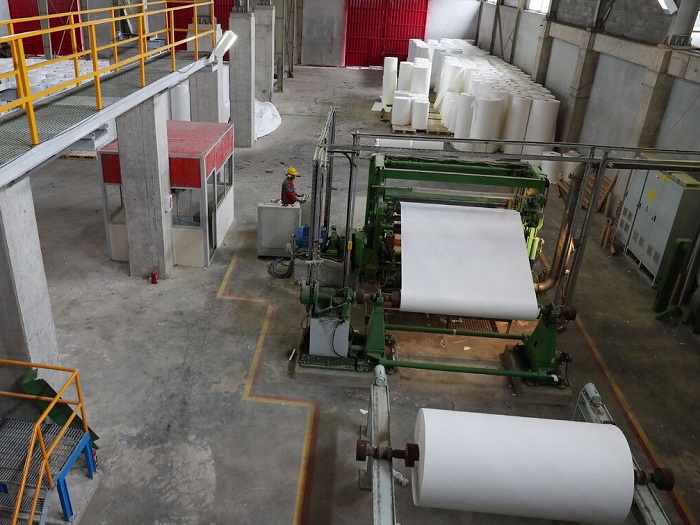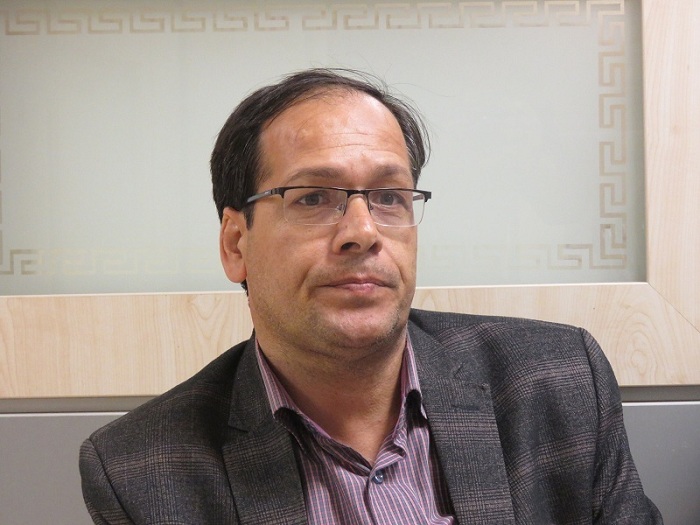On the coin is an economic measure in the production of paper from stone

Paper production from stone is an advanced technology that has been achieved in recent years by using the waste dumps of stone units in Mahallat city in Markazi province, and this is a valuable economic, clean and profitable industrial gift that was realized by the government.
According to the International Iranian Stone Exhibition, paper is one of the important needs of the country's printing and packaging industry, which in recent decades, especially in the face of sanctions, has its own difficulties with production, but in the shadow of today's economic management with optimal capacity management. The interior is met by turning stone into paper, part of the needs of Goshour, which is very valuable.
The import of paper causes the outflow of currency from the country and creates a profit opportunity for the smugglers of this high-consumption and important commodity. In difficult conditions, the country has been able to be effective and meet some of the needs.
"Rock paper" is one of the products that is very similar to the paper family and is usually obtained from the combination of 80% calcium carbonate from mining wastes of building stones such as travertine, marble and porcelain with a few percent of polymeric materials and other materials. The result is converted into paper in a special process and with the use of special devices, which is a valuable step in terms of environment and helping the components of protection of basic resources, while being effective in generating income and employment.
Rock paper is a type of paper product that is made from limestone and has many properties that make it even more prominent than paper born from wood and wood.
One of the major disadvantages of plain paper is its extreme vulnerability to moisture, while limestone paper can retain moisture.
Ordinary papers in the production process require eighty percent of water consumption, but rock paper does not need any water in the production process and only consumes electricity, and due to the fact that its raw material is limestone, there is no need to cut down trees and destroy them. There are no forests.
The technology of producing paper from stone is now used in more than forty countries of the world, and by localizing its knowledge in the country, while creating jobs, part of the country's problems in supplying paper can be solved.
Creating a unit with the ability to produce this type of paper, in addition to protecting the environment and natural resources, creates the possibility of investing in target markets and solves the problem of supplying the paper needed by the country with regard to providing market conditions for this product.
Experts and researchers believe that the waste and waste of the stone industry during extraction and processing in the center of stone production in the city of Mahallat is twice the global average.
The field of paper production from stone in Mahallat city has been provided by using the existing capacity of stone industrial units in this city with the participation and investment of the private sector.
Sadrieh Mahallat city hosts stone paper production units

The head of the Department of Industry, Mines and Trade of Mahallat city said: Thirteen hectares of national lands in this city have been allocated for the construction of stone paper production units in Sadriyeh region and so far eight applicants for stone paper production have applied to participate in using these facilities.
"Mohammad Reza Maleki" stated: A paper production unit from stone in Mahallat city is ready for operation and its equipment has been purchased, but due to the outbreak of coronary heart disease and the absence of Chinese specialists, the process of installing devices in this unit has not been completed yet.
He announced the investment volume of these industrial projects as eight hundred and twenty-five thousand million Rials and said: the nominal production capacity in it is one hundred and twenty thousand tons of paper per year and its exploitation creates employment opportunities for forty people.
The head of the Department of Industry, Mines and Trade of Mahallat city said: another unit of paper production from stone in this city has a forty percent physical progress and land has been assigned to five other units.
Maleki stated: The raw material for paper production in these industrial projects is a variety of waste carcasses of building stone and facade, which is abundant in stone quarries and facades of Mahallat city.
He pointed out: the capacity of Mahallat city to create paper production units from stone is exceptional, because the establishment of such units in the conditions of sanctions helps the country's economy and prevents the outflow of currency from the country and has a great impact on economic prosperity and value added. has it.
Neighborhood stone units have sixty-five percent waste
The researcher and researcher of the country's ornamental stones said: the process of processing stone from carcass extracted according to the standard and the world average has 30% of waste, but this figure is 65% in Mahallat city.
"Abbas Sarafrazi" stated: Lack of modern technology in the stone industry, especially in the mining and processing sector, improper packaging of processed stone in the domestic market causes a large part of the stone to be discarded and waste and to prevent it from turning into waste and difficult to The environment must be optimized for its optimal use.
He continued: "Paper production from stone, although costly in terms of infancy and the import of technology, but its consequences in preserving the environment and preventing the felling of trees are undeniable."
"The production of rock paper is an amazing phenomenon in the printing industry and its production is the beginning of a new era in the production of environmentally friendly papers because its raw material is taken from nature and therefore it seems that we should no longer worry about cutting down trees and their destructive effects." Be on the environment.
Sarfazari continued: "In the process of producing paper from stone, not only water is used, but due to the whiteness of the raw materials, there is no need to use bleaches, resulting in a quality and environmentally friendly product."
Processing of stone waste and preventing the outflow of the country's currency
The head of the Mining Commission of the Iranian Stone Association said: "The waste created in the processing of stone facades is valuable because gold and the production of paper from stone is a great work that causes added value and prevents pollution."
"Aziz Mirzaeian" said: "Mineral reserves are one of the great blessings of God that have been granted to our country and are difficult to renew. One of them is the production of paper from limestone and brings with it the gift of increasing productivity.
He stated: The government of prudence and hope can encourage the miners of Mahallat city to use stone waste for paper production by providing the necessary informed incentives and providing facilities and optimal training.
The head of the Mining Commission of the Iranian Stone Association, pointing out that the production of paper from stone creates many job opportunities, said: Lead to the prosperity of the side arms of the stone industry and the production of paper from stone waste.
Mirzaeian reminded: producing paper from stone is also beneficial for the government in the long run because it prevents the outflow of currency to buy paper.
He added: "Stone waste is an investment that can be easily separated from the body of the stone industry and instead of throwing it away, it can be used in construction operations and branches of art with modern technology and new designs in the shadow of aesthetic development plans."
Mahallat city located in the southern strip of Markazi province is considered as the center of production of decorative stones, flowers and knitwear in the country. Sixty percent of the country's travertine building stones are supplied from the mines of Mahallat city.
* IRNA










